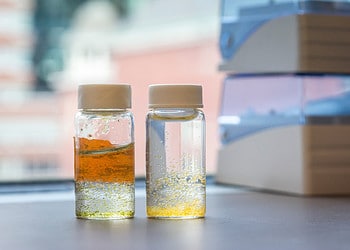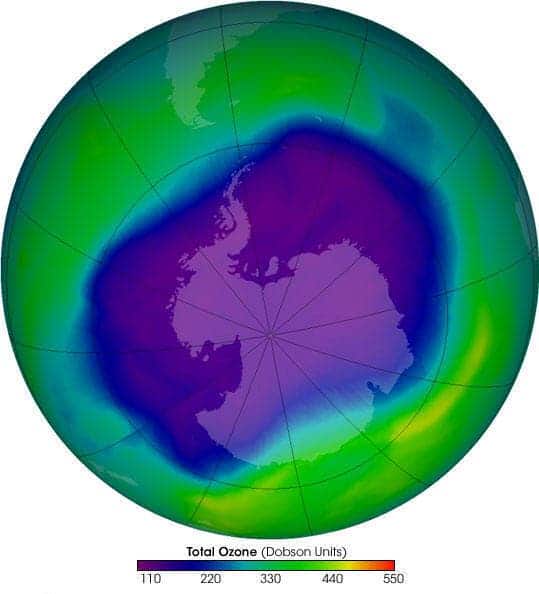
There’s something cozy and homey about the aromas of scented candles. But beneath this pleasant smell, scientific research is uncovering a troubling truth: these products are polluting the very air you breathe.
Recent studies have revealed that all scented candles emit nanoparticles comparable to pollution from diesel engines. They release toxic volatile organic compounds (VOCs), carcinogenic pollutants, and fine particulate matter that can damage your lungs, disrupt your hormones, and even increase the risk of chronic disease. This even applies to “flame-free” scented products like wax melts, scientists say.
Candles and VOCs
Scented candles are designed to release fragrance. They do so by evaporating essential oils or synthetic fragrance oils contained within the wax as the candle burns. As they do that, they also release a cocktail of volatile organic compounds (VOCs).
These VOCs are the primary culprits behind the pollution caused by scented candles. They usually come from petroleum-based waxes and synthetic or natural fragrances. They also react with indoor air to form secondary pollutants like formaldehyde, benzene, and other ultrafine particles.
Studies have shown that nearly all fragrance products, including “green” and “organic” ones, release at least one hazardous chemical. These emissions are strong enough to trigger problems even if they aren’t burned. Just by being in the room, a scented candle can affect your health.

“I have heard from numerous people who have asthma that they can’t even go into a store if the store sells scented candles, even if they aren’t being burned,” said Anne Steinemann, who led one of the studies, in 2015. “They emit so much fragrance that they can trigger asthma attacks and even migraines.”
Many people turn to soy or beeswax candles as an alternative, assuming they are safer. They’re a bit better, but not completely safe either. Research indicates that even natural waxes release VOCs when burned, particularly if they contain added fragrances.
Nanoparticles Are The Invisible Threat
A 2025 study focused specifically on scented wax melts, which are marketed as a “safe” alternative to traditional candles. The researchers found that these products also release nanoparticles in concentrations comparable to emissions from gas stoves and car exhaust.
It’s not just that these particles can be toxic, their size matters too.
These nanoparticles are so small they bypass the body’s natural defenses. They often travel directly from the lungs into the bloodstream. Once there, they contribute to inflammation, oxidative stress, and DNA damage, increasing the risk of problems like cardiovascular disease or lung damage.
Another study examined air fresheners, diffusers, and other room fragrance products. These products also release over 100 different chemical compounds. Among them, terpenes (naturally derived from plant oils) react with indoor ozone, forming secondary organic aerosols and ultrafine particles that degrade air quality. It’s not just the fragrance, either. The study found that even fragrance-free or “natural” products emitted toxic compounds, challenging the idea that “clean” or essential oil-based products are inherently safe.
“I think it would be almost impossible to not make some sort of indoor pollution with any type of candle,” said Michael Bergin, a civil and environmental engineering professor at Duke University, for Inverse.
This is particularly concerning for people with a sensitivity to acute toxicity. But this doesn’t mean everyone else should be fine.
A 2019 study, also by Steinemann, found that 20% of the population reports some form of chemical sensitivity, with symptoms ranging from migraines and asthma attacks to neurological impairment. Around one-third of people report some fragrance sensitivity, and 7.4% of the population report medically diagnosed multiple chemical sensitivity, a condition characterized by vulnerability to pollutants. The study analyzed people in the UK, UK, Australia, and Sweden.
Even more troubling, children and pets (who breathe more air per body weight than adults) are particularly vulnerable to these toxins. Babies, whose developing lungs and immune systems are still fragile, are at a greater risk of respiratory diseases when exposed to indoor air pollutants from scented candles and air fresheners.
Your Home Can Become a Pollution Trap
Indoor pollution is, in many ways, even more problematic than outdoor. The pollution from things like candles and air freshners gets trapped, leading to prolonged exposure.
Modern homes are often not sufficiently ventilated because they are designed for energy efficiency rather than air exchange. This makes them more prone to trapping indoor pollutants like VOCs, particulate matter, and carbon dioxide inside. With airtight construction, sealed windows, and improved insulation, homes reduce energy costs but they also limit fresh air circulation.
Most houses also aren’t ventilated properly. It’s easy to forget to open the windows, especially in colder months or in urban areas where noise and outdoor pollution is a concern. This can make a house a “pollution trap.” As a result, indoor air pollutants accumulate, creating a stagnant environment where chemicals from candles, cleaning products, and furnishings linger far longer than they would in a well-ventilated space.
If you love scented candles or other similar products, ventilation is your friend. Open the windows, ensure ventilation, and let the fresh air come in. If you do use candles, an unscented beeswax with a cotton wick tends to burn more cleanly than a paraffin candle. It’s not completely harmless, but it’s less problematic.
Of course, scale matters. A scented candle won’t kill you. In fact, one 2014 study reported that under “normal conditions,” scented candles do not pose significant health risks to the consumer. However, there aren’t enough long-term studies to properly assess this risk. We do know that VOC pollution can pose health risks, but it’s hard to say what’s the exact dangerous threshold.
Ultimately, it’s up to everyone to decide how much they value the indulgence of a scented candle versus the potential risk. But at the end of the day, the science is clear: they are a significant source of indoor air pollution, and the hidden toxins they release linger far beyond the moment they are blown out.
This article was originally published in February 2025 and has been edited to include additional information.





